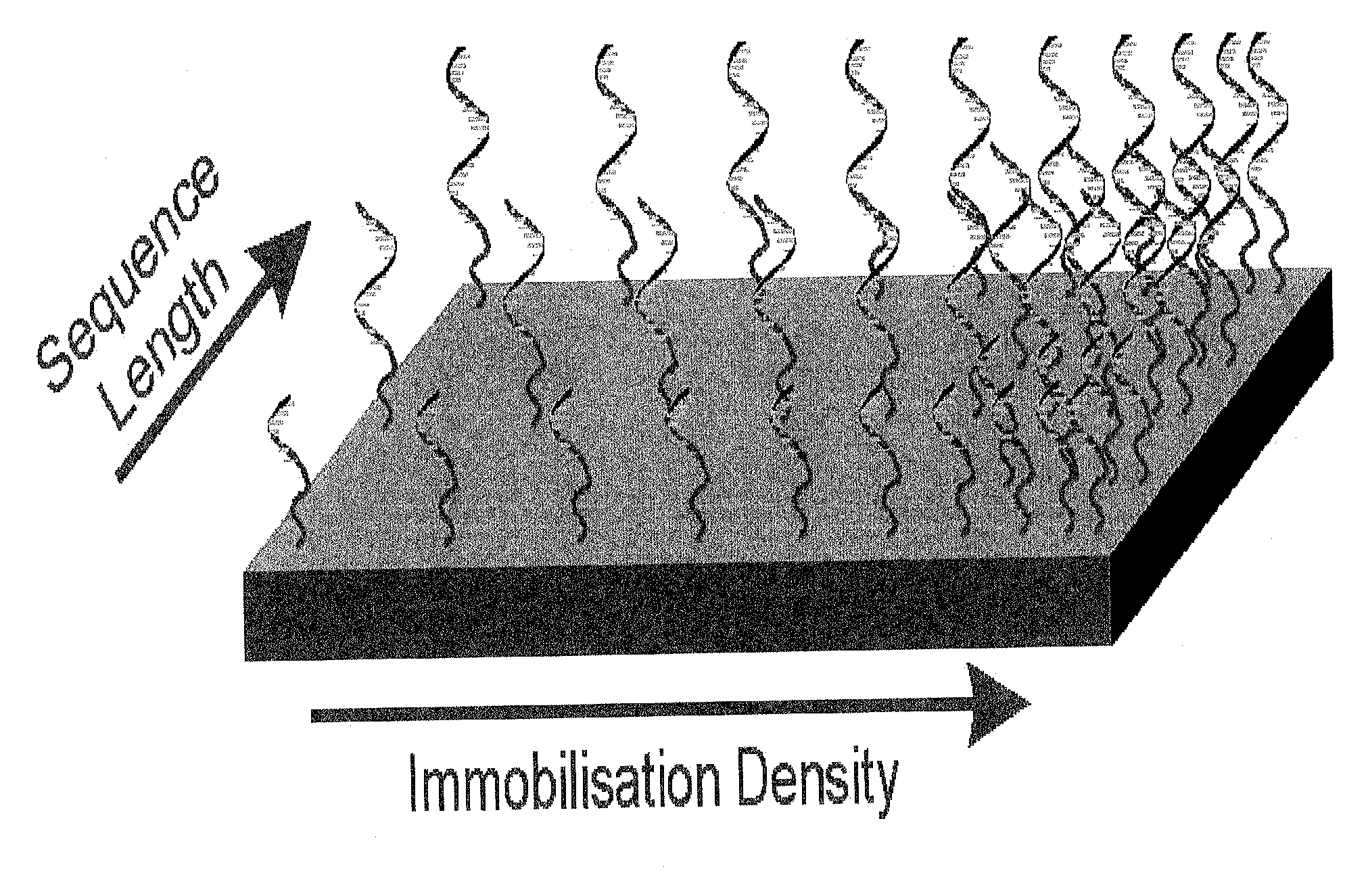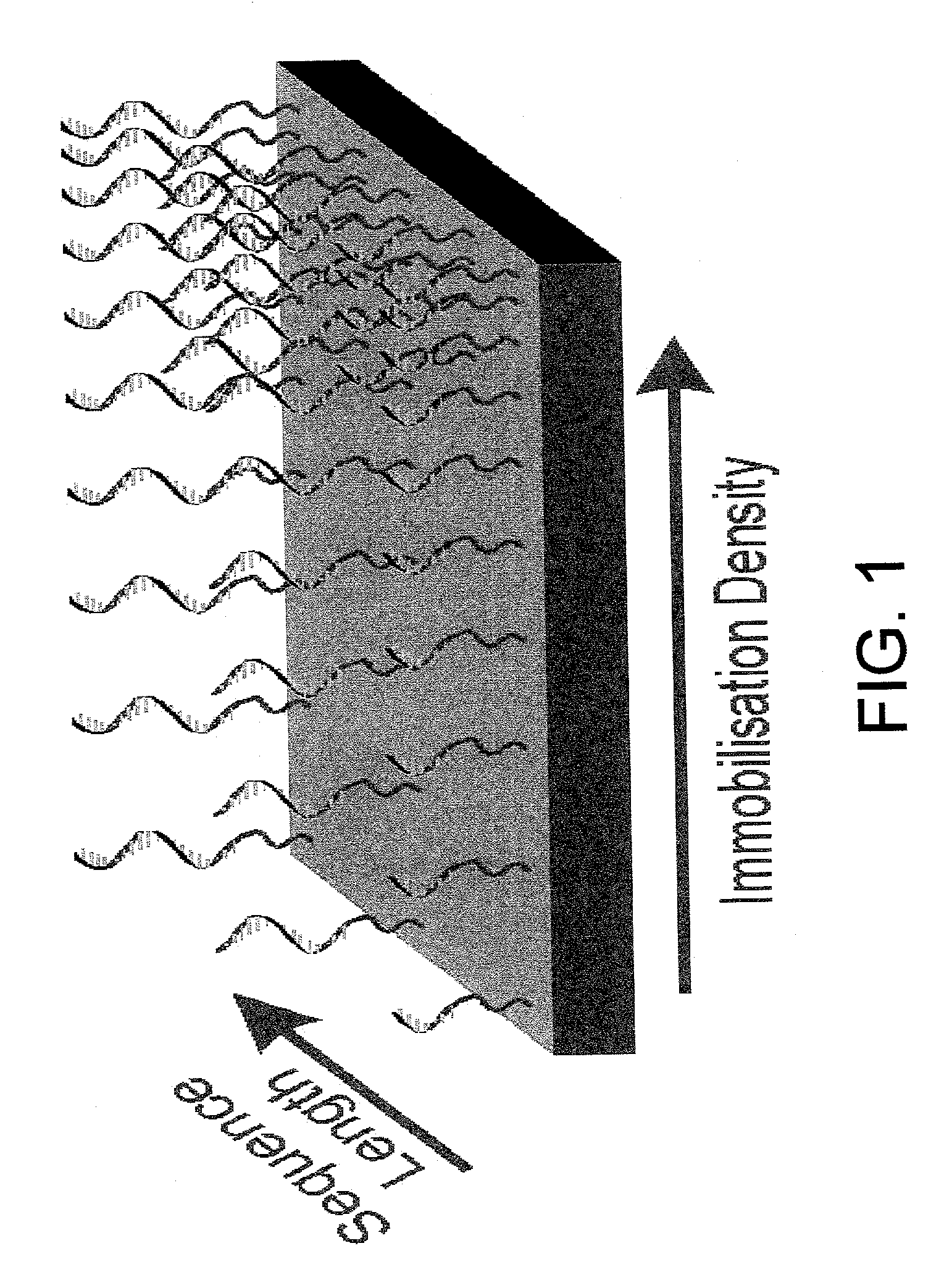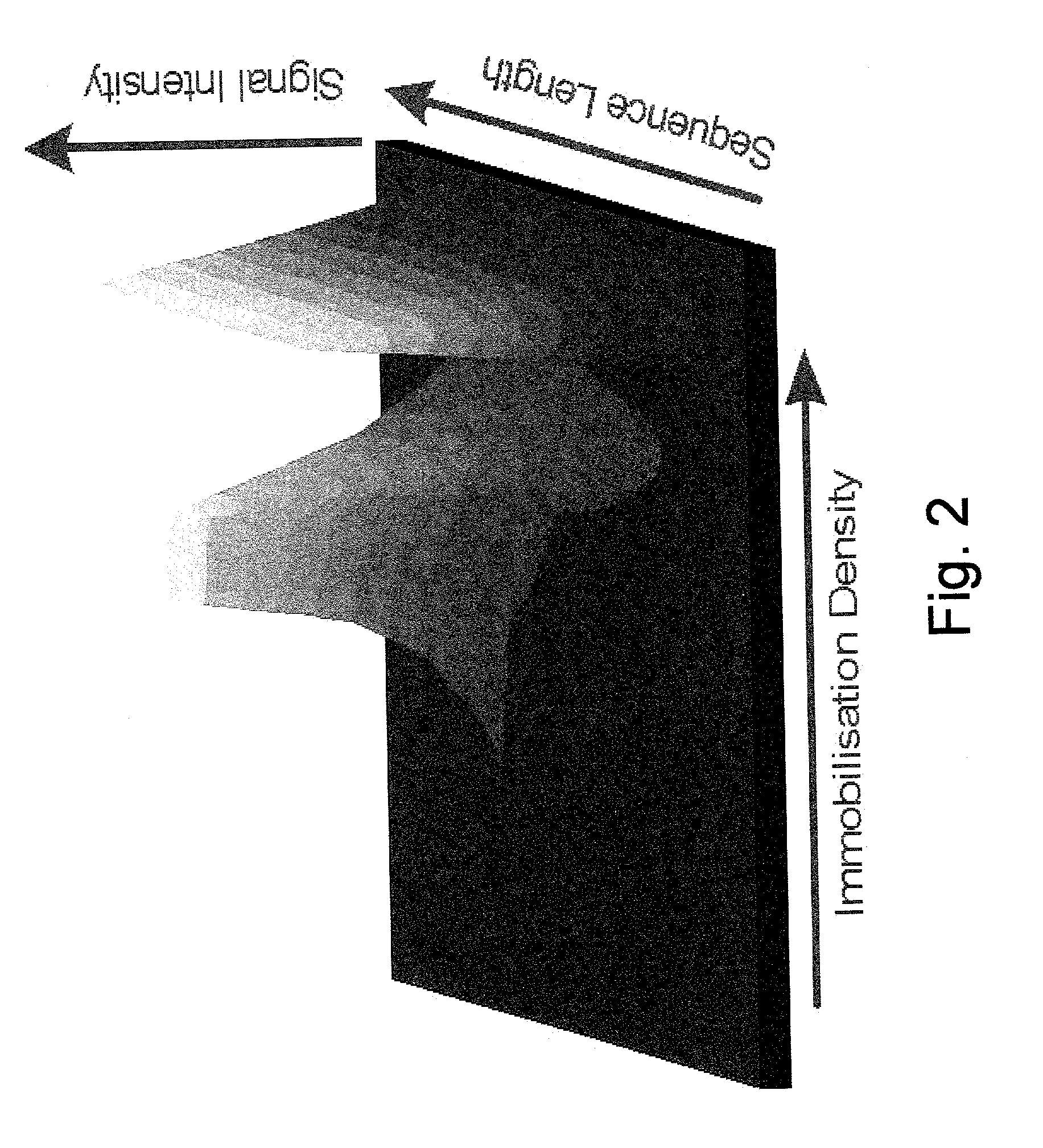Gradient resolved information platform
a technology of information platform and gradient, applied in chemical libraries, combinational chemistry, biochemistry apparatus, etc., can solve the problems of lack of selectivity, inability to provide absolute quantitative results, and inability to reuse,
- Summary
- Abstract
- Description
- Claims
- Application Information
AI Technical Summary
Benefits of technology
Problems solved by technology
Method used
Image
Examples
example 1
Probe Density Gradients on Fused Silica Optical Wafers
[0070]Immobilized single-stranded DNA (ssDNA) is used as a selective probe molecule to bind complementary and partially complementary nucleic acids. The density of ssDNA on a surface determines nearest neighbour interactions, surface interactions and charge density due to ionizable phosphate groups. This results in a local ionic strength, pH and dielectric constant at the surface that is substantially different from that in bulk electrolyte solution. It is the local conditions that influence the thermodynamics of hybridisation, and this is manipulated by temperature control as related to the melt temperature (Tm, which is defined as the temperature at which half of all duplexes originally formed are denatured into the single-stranded state), of double-stranded DNA (dsDNA). Organosilane chemistry is used to covalently immobilize hexaethylene glycol (HEG) linkers to the surface and to control the subsequent density of dT20 that is ...
example 2
Preparation of Gradients on ITO Substrates
Materials
[0104]Aqueous ammonia (30%), dichloroacetic acid, dichloromethane (DCM), diethylether, acetone, methanol, iodine, toluene, tetrahydrofuran (THF), pyridine were purchased from BDH (Toronto, ON, Canada). N, N-diisopropylethylamine (Hunig's base), 1-methylimidazole, 3-glycidoxypropyltrimethoxysilane (GOPS) from Aldrich. All phosphoramidite reagents, pre-packed columns, pre-prepared capping agents, 0.45M-tetrazole solution (activator), and DNA synthesis grade acetonitrile were from Dalton Chemical Laboratories (Toronto, ON, Canada). Indium-Tin Oxide (ITO) slides (In2(Sn)Ox, 50×7×0.7 mm, passivated, unpolished float glass cuvette, coated one side slides, Rs≦20 Ω) were from Delta Technologies (Stillwater, Minn., USA). 5′-Amino-modifier C12 was from Bio / Can Scientific (Mississauga, Ont, Canada). Cy5-Amidite (dye Amidite 667) was from Pharmacia (Bare D'urse, QC, Canada).
[0105]Solvents were dried under an inert atmosphere of dry argon (Canox...
PUM
 Login to View More
Login to View More Abstract
Description
Claims
Application Information
 Login to View More
Login to View More - R&D
- Intellectual Property
- Life Sciences
- Materials
- Tech Scout
- Unparalleled Data Quality
- Higher Quality Content
- 60% Fewer Hallucinations
Browse by: Latest US Patents, China's latest patents, Technical Efficacy Thesaurus, Application Domain, Technology Topic, Popular Technical Reports.
© 2025 PatSnap. All rights reserved.Legal|Privacy policy|Modern Slavery Act Transparency Statement|Sitemap|About US| Contact US: help@patsnap.com



